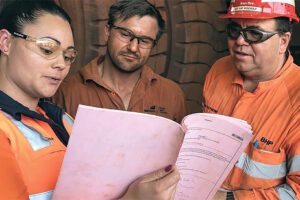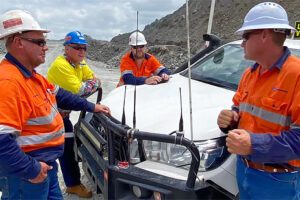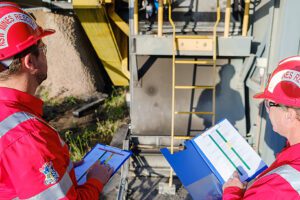Guest post by Drew Bishop
Living in today’s modern time has been a blessing in more ways than one. Technology is currently ruling society to the highest degree, but there are a number of occupations that are very hazardous to our health. Yes, the world is full of dangerous occupations, including firefighting, law enforcement, crab fishing and other hazardous jobs. Did you know that one of the deadliest occupations in the world is mining? Yes, this is absolutely correct, and the death toll in earlier decades once reached over 1,000 per year. These deaths have forced the mining industry to implement better rules and regulations, but there will always be a possibility of death or injury when working in this particular field of work.
First things first, understanding and awareness of the work environment is the first actual step in preventing work-related injuries. Unlike the actual miners, it is the employer’s responsibility to survey the land for any and all weaknesses. A lack of surveying has resulted in huge lawsuits for mining companies. Here are some common ways to provide more effective safety measures while mining.
1. Chemical hazards rank high on the list of mining dangers, especially when it comes to coal mining. Polymeric chemicals are the culprits, and they can result in poisoning, burns and respiratory issues. There should be precautions and safety measures that are already in place before commencing. Better ventilation, proper gear, cleanliness and chemical-hygiene plans are proficient protocols.
2. Flooding is serious business since most miners are working underground. Flash floods are always possible, and flooding can come from everyday rain showers. Climate and weather systems can be conducive to certain regions of the globe. Mining in a flood zone can be catastrophic, and standing water will definitely saturate the ground. In most cases, flooding can be effectively handled by studying the geographic region, and its climate. A professional opinion from a geologist is another great safety solution because they study natural substances like rock.
3. Coal dust is very common, and it’s one of the most concerning dangers when mining. Consistent inhalation of dust can be fatal. Lung disease, also known as “black lung” in the mining field, can cause respiratory issues, including the scarring of lung tissue and shortness of breath. Better dust-control systems need to be implemented as well as incorporating a more efficient dust-control plan. These systems should be checked throughout the working hours or checked between shifts. Miners should also be trained to handle over-exposure to coal dust.
4. Arc flashes are extreme surges of heat energy that can severely injure, or even kill, anyone within a radius of around 10 feet or more. The sound waves and pressure from a flash can even throw workers across the room in certain instances. Regular risk evaluations can play a large role in prevention, as well as proper warning signage along with infrared monitoring and employee training.
5. Musculoskeletal disorders are common with mining because there’s a lot of heavy lifting going on. These negative disorders can also manifest from trips and falls. Injuries to bones, blood vessels, muscles and nerves can develop over time. Preventative features should be implemented to identify possible MSD hazards. Employers should thoroughly assess the job site. Workers should be trained on these hazards and should report any MSD symptoms.
6. Extreme Heat is very dangerous, and it can be fatal. Heat stroke is common among miners because of the extreme temperatures, high humidity and lack of cool air. Perception, concentration, dizziness and a lack of sweating are indicators of a heat-related illness. Employers should have cooling systems that are already in place, and there should be technicians on every shift. Workers should definitely report themselves to medics at the first sign of heat exhaustion. Medical personnel should also be on deck to check the workers.
As you can see, this only scratches the surface of dangerous situations that can manifest while mining. Sparks from cutting machines, compression of air and seismic activity are a few notable mentions. As the old saying goes, “an ounce of prevention is worth a pound of cure.”
Drew Bishop is a contributing writer and media specialist for IRISS. He regularly produces content for a variety of mining and warehouse management blogs.














Add Comment